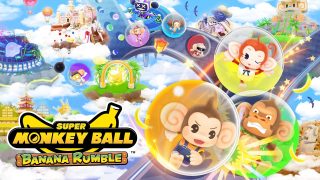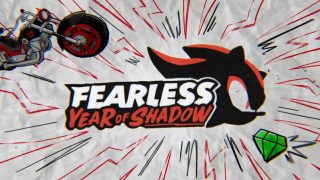For today’s addition to our Zelda recap series we’re tackling things a little bit differently – by combining both DS Zelda games together. Built on the same engine and having many of the same mechanics, they definitely come from the same mould, but there are a few unique aspects that set them apart from one another.
Both Phantom Hourglass and Spirit Tracks were built around the Nintendo DS, for better or worse. While the stylus based movement and sword slashes work well enough, the majority of gameplay had to be toned down compared to older titles, even the handheld ones. Gone was the reflex-oriented combat and precise movement, which simply wouldn’t jive with the more lax touch controls.
Do they hold up now Nintendo has returned to a more classic handheld approach with A Link Between Worlds? I’d say it depends on which game you’re talking about…
Sands of Time
Phantom Hourglass was always going to be a rough proposition for me, as it bills itself as a direct sequel to my favorite Zelda game of all time – Wind Waker. Unfortunately, other than the cute opening picture show and a few returning characters, the connection is barely relevant. I feel the same about the gameplay – it still revolves around the high seas, but the scope is much more limited.
To me Wind Waker was a game all about character – from the colorful NPCs to the relationships Link builds, even the locales themselves. All of that quite literally goes overboard within minutes, and none of the new NPCs, besides Linebeck and arguably Ciela, fill the void. Even almost all of the islands are flat and bland, dotted with a few villagers and barely any buildings. Granted a lot of this is down to the DS’ technical capabilities, but it feels especially egregious when they appear much more expansive and interesting when seen from your boat.

Perhaps the biggest point of contention for Phantom Hourglass, though, is the Temple of the Ocean King. This is a dungeon you return to throughout the game, repeating the same floors each time. While shortcuts can be opened up and new treasures be found thanks to the items you acquire, it’s still a tedious task that feels like an attempt to pad out the game more often than not.
While I appreciate the game’s simplistic similarities to earlier games like Link’s Awakening, Phantom Hourglass felt unambitious by comparison. Thankfully, Nintendo gave it another shot two years later…
On Rails
The second DS Zelda game, Spirit Tracks, feels to me like Nintendo’s attempt to fix many of Phantom Hourglass’ wrongs, although it undeniably introduced a few more baffling problems.
For starters, while the game is still a sequel to Wind Waker, it feels far enough removed to avoid being overshadowed, taking place a hundred years later with a new Link and Zelda at the core. I actually love how it calls back to prior two games, with obvious descendants cropping up in various places, and “New Hyrule” as a concept is incredibly interesting. In Europe, Link’s hometown was even called Outset Village, only strengthening the connection.

The true star of the show is Zelda herself, though. This game still marks her most prominent appearance yet, acting as Link’s support in spectral form, much like Navi and Midna before her. Zelda’s personality is a mix of regal Princess’ past and the more snappy, rambunctious Tetra, providing a unique take on the typical companion character.
Zelda also helps liven up Spirit Tracks’ equivalent to the Temple of the Ocean King: the Spirit Tower. Similarly structured though thankfully without the repetition, Zelda can possess the imposing Phantoms and be guided independently from Link, leading to some unique puzzles and adorable high-fives.

So far, so improved, but there are two remaining points that bring Spirit Tracks down a notch. First is the reliance on the DS microphone throughout, which can lead to some awkward situations if you ever play the game in public. Then there’s the train, which is a pretty slow and laborious way of getting from place to place, even if it gets more intricate later on. Personally I have a bizarre affinity for video game locomotives so it never bothered me so much, but I totally get the complaints.
Muted Legacy
Phantom Hourglass and Spirit Tracks will likely go down as a footnote in the Zelda saga. They’re essentially the perfect entries to get casual gamers on board with the franchise, but when viewed from the perspective of a long-time Zelda fan they’re lightweight and bizarre; arguably an even bigger black sheep than Zelda 2.
I’d recommend everyone at least play Spirit Tracks for the interesting story developments and Zelda characterization, just don’t go in expecting the caliber of a Link to the Past.
Then again, Zelda producer Eiji Aonuma recently said Phantom Hourglass was his favorite Zelda game ever, so maybe it’s about time we all gave these little experiments another chance.
This article is part of our new Zelda look-back series running up to the release of Breath of the Wild.
Leave a Comment


